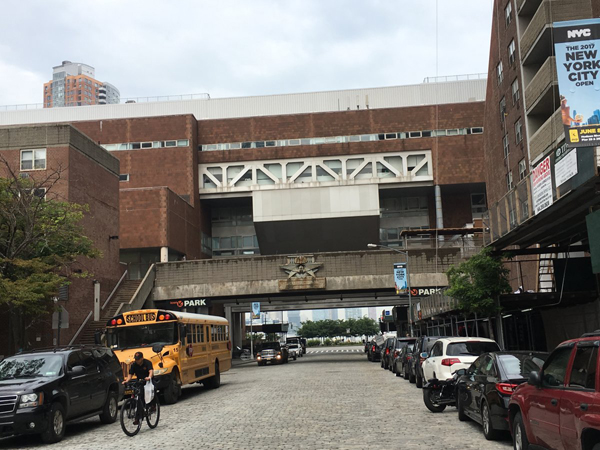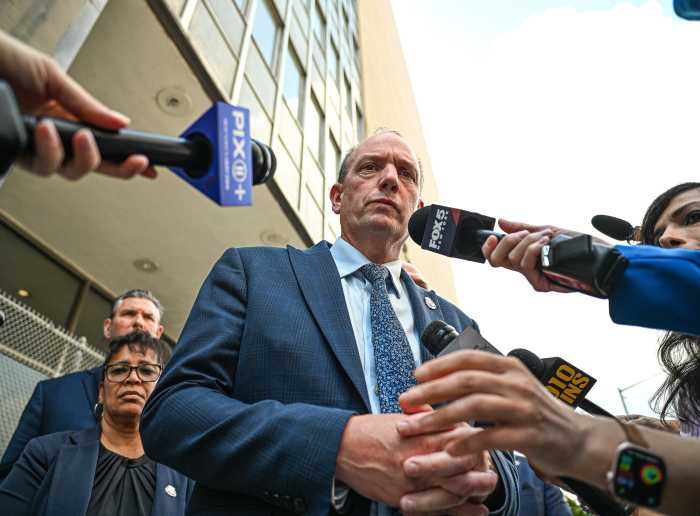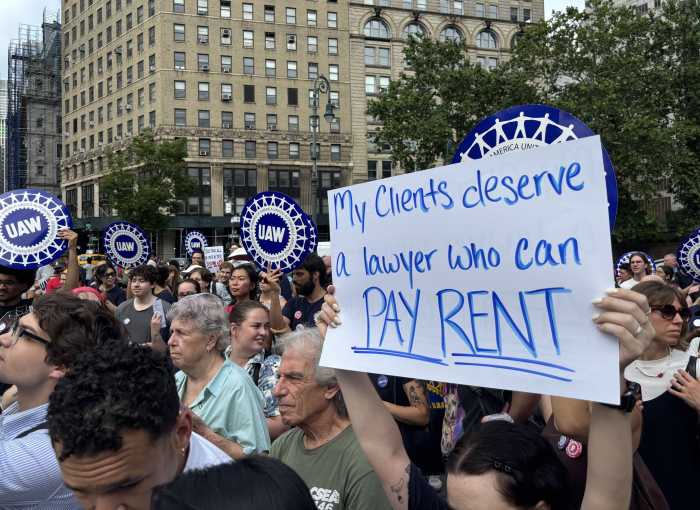
Borough of Manhattan Community College has the largest student population and smallest campus of any school in the CUNY system, and is exploring various options for dealing with its capacity issues.
BY COLIN MIXSON
Space is always tight in Downtown Manhattan, and the neighborhood’s community college offers a masterclass in making do in cramped quarters — but an effort is under way to expand the curriculum, so to speak.
The Borough of Manhattan Community College — the biggest little college in the CUNY system — is requesting funds from local elected officials to help fix problems that have arisen from the “peculiar” design of its Chambers Street campus.
BMCC’s surreal main campus building forces students to go up to get down, and to go outside to get inside, and the institution is asking for $900,000 from the city to bring a little sense to the mixed up structure.
“The Chamber Street building is very peculiar,” said G. Scott Anderson, the vice president of administration and planning at BMCC. “I don’t know whether it was a nightmare the architect had, or if they thought it was a great idea, but it doesn’t work in terms of the flow of traffic.”
With 27,000 students, the Downtown community college is cramming the city’s largest population of undergraduate students into the smallest city campus, and the oddly designed main building at 199 Chamber Street doesn’t make things easy for a school struggling with capacity issues, Anderson said.
For example, scholars heading from class are forced to go outside and hike about 60 feet through the elements to access student services, including the registrars office, counseling, job placement, and even the disability and health services offices — despite the fact that they’re located in the same building.
The city funding would allow BMCC to erect an enclosed pedestrian walkway connecting the disjointed halves of the building, allowing students to access services without having to brave the elements.
The addition will also allow the school to consolidate the two separate entrances into one, allowing them to focus security at one location, in addition to easing congestion, Anderson said.
Perhaps best of all, the construction would displace the smokers who typically congregate where the new addition would be — and whose fumes have a tendency to get sucked up by a nearby air intake, and vented into on the school’s most popular community rooms, according to Anderson.
BMCC also has a few other projects in the works, many of which are related to expanding capacity and adapting the aging campus to serve the school’s expanding student body.
During the attacks on Sept. 11, 2001, BMCC lost roughly 40 percent of its student capacity when 70 classrooms were destroyed at Fiterman Hall on Greenwich Street.
The administration expected enrollment to taper off the following year in light of the destruction, but it actually did the opposite, and the school’s overall student body increased by several hundred students.
The trend continued in the wake of the financial crisis in 2008 — when people needed to fortify their resumes — and the community college again boomed while just about everything else went bust, Anderson said.
“When the economy dips community college enrollment shoots up — and since 2008, it’s been climbing, and climbing, and climbing,” Anderson said.
Another design flaw with the 1960s-era Chambers Street campus is its heating and cooling system, which was designed to accommodate a little more than 8,000 students and faculty.
The environmental systems in the building are so woefully inadequate that the school routinely shuts down non-essential electronic equipment, including computers and copy machines, to keep the building from overheating at night.
“Back then, God hadn’t invented PCs and photocopiers,” said Anderson.
So the school is also asking the city for $1 million to outfit the school with LED lights, which are not only brighter and create less heat, but will also help cut down on the school’s energy bills.
“We’re trying to get away from the fluorescents we’ve been using,” Anderson said. “It’s old school and burns up a lot of energy.”
Meanwhile, the college plans on self funding an expansion at its 70 Murray Street campus, which would give the school between 15 and 20 additional classrooms to use in its fight against overcapacity. And given BMCC’s track record, the space will be put to good use.
“We start classes at 7 am, and our last class breaks at 10:45 pm,” said Anderson. “In terms of space utilization, no one comes near BMCC. What we have, we use.”




































